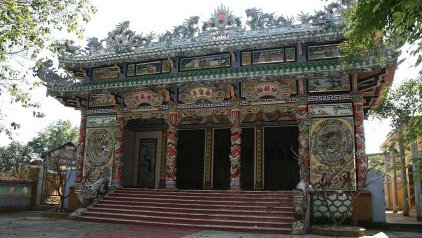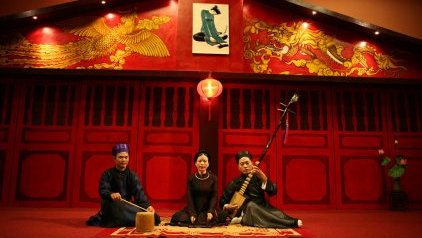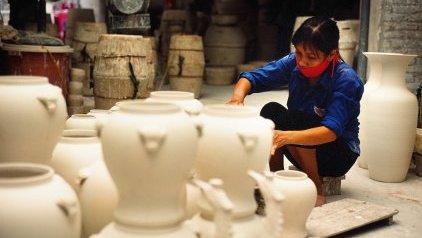The Tube Houses of Hanoi's Old Quarter
The Old Quarter has a rich religious heritage. To fully explore the Old Quarter in Hanoi, prepare your feet for a day of walking. You’ll be rewarded with a glimpse into the daily life of locals amidst these old-style narrow streets and houses.
The Old Quarter is the historic soul of Hanoi and is defined by fascinating labyrinth of ancient streets buzzing with commerce. Hanoi's Old Quarter is one of the last traditional handicraft and trading areas in Southeast Asia. A walk through the Old Quarter allows one to glimpse Vietnamese life from ages past. Hanoi is legendary for its “tube houses” that trade width for height and depth. Tube houses are so named because they are just that: a long, narrow tube of space that is subdivided into sections that served the family's every need. Buildings perform what would seem to be architectural miracles by heading several stories into the air supported by a narrow base.
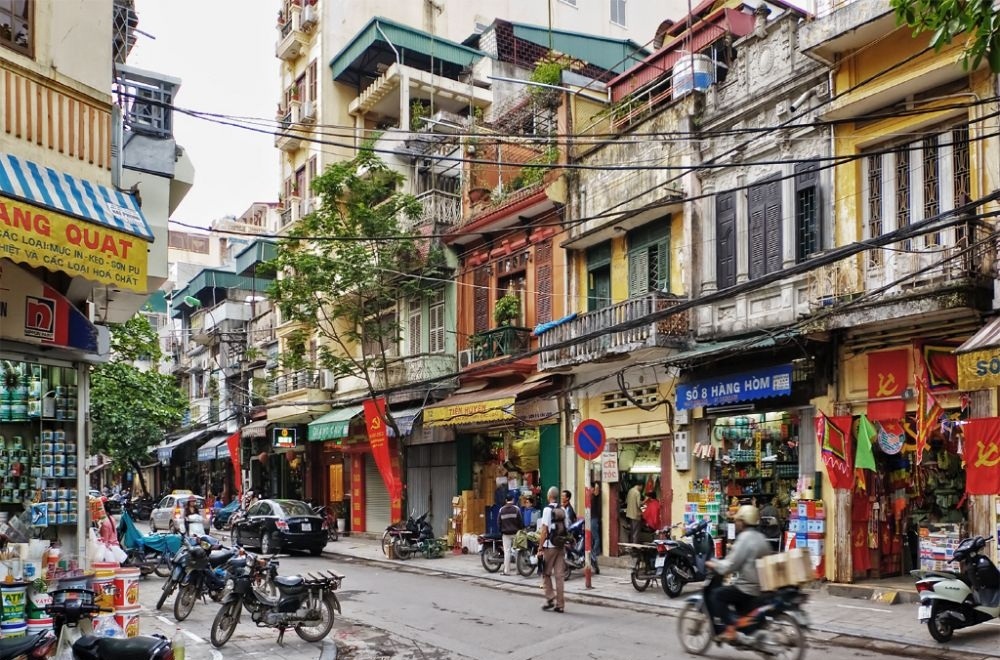
Old tube houses in Hanoi Old Quarter
While space is somewhat at a premium in the Old Quarter, some of these buildings are just amazingly narrow that two people can barely stand next to each other in some of them. Why so narrow? The custom of "tube houses," typical of Hanoi's Old Quarter, began as a tax-saving measure, since property in the nineteenth-century Nguyen Dynasty was taxed only by street frontage. For centuries, governments in Hanoi used a method of determining property taxes based on the width of the property from the street. The wider your house is, the more you paid! Not surprisingly, people responded by building houses as narrow as possible. The buildings were cleverly built to be thin but deep – a clever way to avoid tax while still allowing plenty of space. Most of these buildings were owned by a single family that operates a small business or shop in the front section and living quarters to the rear – a simple one-storey building. If the business became success, often the buildings would expand the only way it could without paying more in tax – upwards. This has created a series of long, thin, tall buildings. Once multiple floors are built, the family then shares out the building, with parents, grandparents and any married children occupying a floor each.
Between building high and building deep, the tube houses can be relatively spacious by Vietnam standards. Tube houses are divided into sections. Traditionally, the front room of the house facing the street was used for selling goods to the public. While selling is done in the front room, each house has a series of courtyards that go deep into each city block. It is hard to imagine how deep these buildings really go considering how small they look from the front, but many have room after room where families live when they are not up front conducting business.
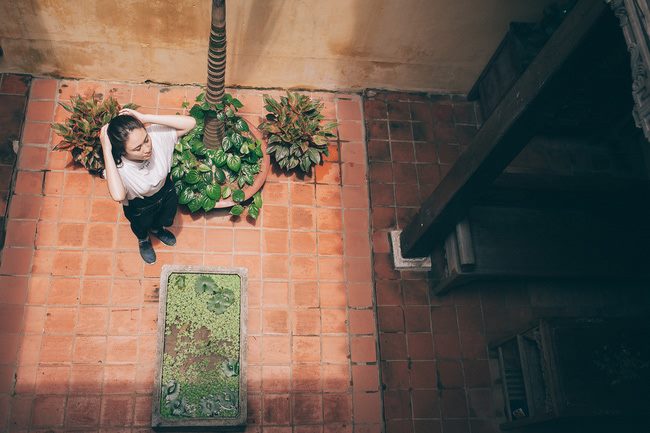
Internal courtyards bring light deep into the house through the skylight
These houses are so long and so deep that they typically have internal courtyards to provide natural light and natural ventilation at mid-block locations. Passage through the house is a movement between inside and outside, external space and internal space. As long and narrow house harder managed, characterized by the tube is space per house always caught between two walls, especially to meet the higher side, forming a gas field that style drums called “the regular paint.” This zone should create wind suction phenomenon – quite strong drafts, together with dust, creating turbulence adversely affect occupant health. Therefore, most of the old houses in the Old Quarter always have a lot of skylights to balance yin and yang. On the other hand, although the old pipe high and long but not build the roof structure as well as the location of various roof possibilities inlet created good and bring light deep into the house through the skylight. You can spot traditional houses by their low tile roofs parallel to the street.
While today’s economy has caused multiple families live together in the same tube house, the houses were originally built with a single family in mind.
Xuyen
Image Sources: Internet






